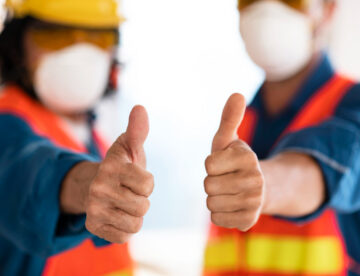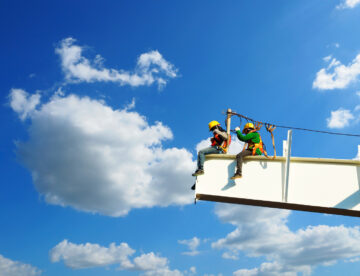
Last Friday we held our first summer BBQ at Sheriff Construction and raised £2612 for a wonderful charity, Macmillan Cancer Support!
Around 80 people joined us, including from our roofing, brickwork and office teams, all of which enjoyed some great food and drinks while giving generously to this worthy cause. Find out more and relive the evening in this week’s blog.

Today marks the 75th anniversary of the NHS, known worldwide as one of the first and best healthcare systems to be universally available and free at the point of delivery.
Unfortunately, while its principles are unshaken, the NHS today is under pressure due to several issues – staff shortages, backlogs from Covid and industrial action to name a few.
Is there anything the construction sector can do to help? The answer actually is ‘yes’. Construction is high-risk industry for both injuries and health issues, but focusing on preventative measures can reduce those risks (consequently reducing some of the pressure on the NHS). Read on to find out more.

Earlier this month, more than 100 UK businesses joined forces with the UK Green Building Council (UKGBC) in calling upon the Government to urgently reform the planning system to tackle climate change alongside the UK’s deepening housing crisis.
In their letter to government, the coalition is asking for reforms to the planning system that would bring it in line with the Climate Change and Environment Acts and says the Levelling Up and Regeneration Bill (currently going through Parliament) could also be a crucial opportunity to align planning decisions with the nation’s net zero emissions target. Find out more in today’s blog.

Today (20th June) is World Refugee Day, a moment when people are invited to not only consider the plight and dismal conditions faced by millions of refugees around the world, but also to celebrate the strength and courage of people who have been forced to flee their home countries to escape disaster, conflict or persecution.
Offering the tagline ‘Hope away from Home. A world where refugees are always included’, this year’s theme made us wonder what the inclusion of refugees has meant for the UK in general and how it might work within industries like construction. Read this week’s blog to find out more.

Even though some people may be out off by rising energy prices and interest rates, home ownership is still very common, with many people viewing it as both a security blanket for themselves and their families and a lucrative investment opportunity.
When searching for the ideal residence, people tend to look for traditional must-haves like outdoor space, the size of the home, parking and local amenities. However, with new ideas and technologies constantly changing the way our houses are designed and fitted out, we wondered what might become the must-haves of the future. Read on for a few thoughts…

In recent years, drone technology has made it far easier to view aerial images of the UK’s urban landscape. But, while our towns and cities are hugely diverse in architectural character, looking down from above they are often very similar, with a common sight being a mass of black, brown and grey roofs.
However, there is a trend which has started to add patches of colour to the aerial perspective – green roofing! In this week’s blog, we’ll explain more about what a green roof is and look at six reasons why this is proving to be a great option for our buildings.

According to the Health and Safety Executive (HSE), almost one in five deaths in the construction industry involves roof work, the most common causes being falls from roof edges or through fragile surfaces.
The saddest thing about this statistic is that a great many of these accidents could have been avoided through the implementation of proper safety measures – using the correct equipment and ensuring workers receive adequate information, instruction, training and supervision. Take a moment to read this week’s blog for some key safety tips.

As more than 400 tax workers join other professions in the recent wave of UK strike action, construction workers have reported serious issues in their attempts to communicate with the HMRC construction Industry Scheme (CIS).
Although online verification doesn’t appear to have been affected, callers to the CIS helpline have faced long delays with some reporting being cut off during their attempts to speak to someone. Find out more in this week’s blog.

Mental Health Awareness Week takes place from Monday 15 – Sunday 21 May 2023 and this year the official theme set by the Mental Health Foundation is ‘anxiety’.
Anxiety is a normal emotion that everyone has probably experienced at some point in their lives – for instance, when preparing for an exam, starting a new job or giving a speech in public. However, some people experience more frequent and intense levels of anxiety (an anxiety disorder) and the impact of this on their daily lives can become a problem.
Today, we’re looking at what anxiety means and some practices that can help you manage it better.

While some of the mobile apps we download end up doing little but take up space on our phones or tablets, others are revolutionising the way we live and work.
Right now, there are a great many mobile apps that are proving particularly useful for those working in the construction industry – supporting people by making every-day tasks simpler, improving efficiency in working practices and raising professional standards higher than ever before. In this week’s blog, we’ve got a rundown of just some of the apps available.
